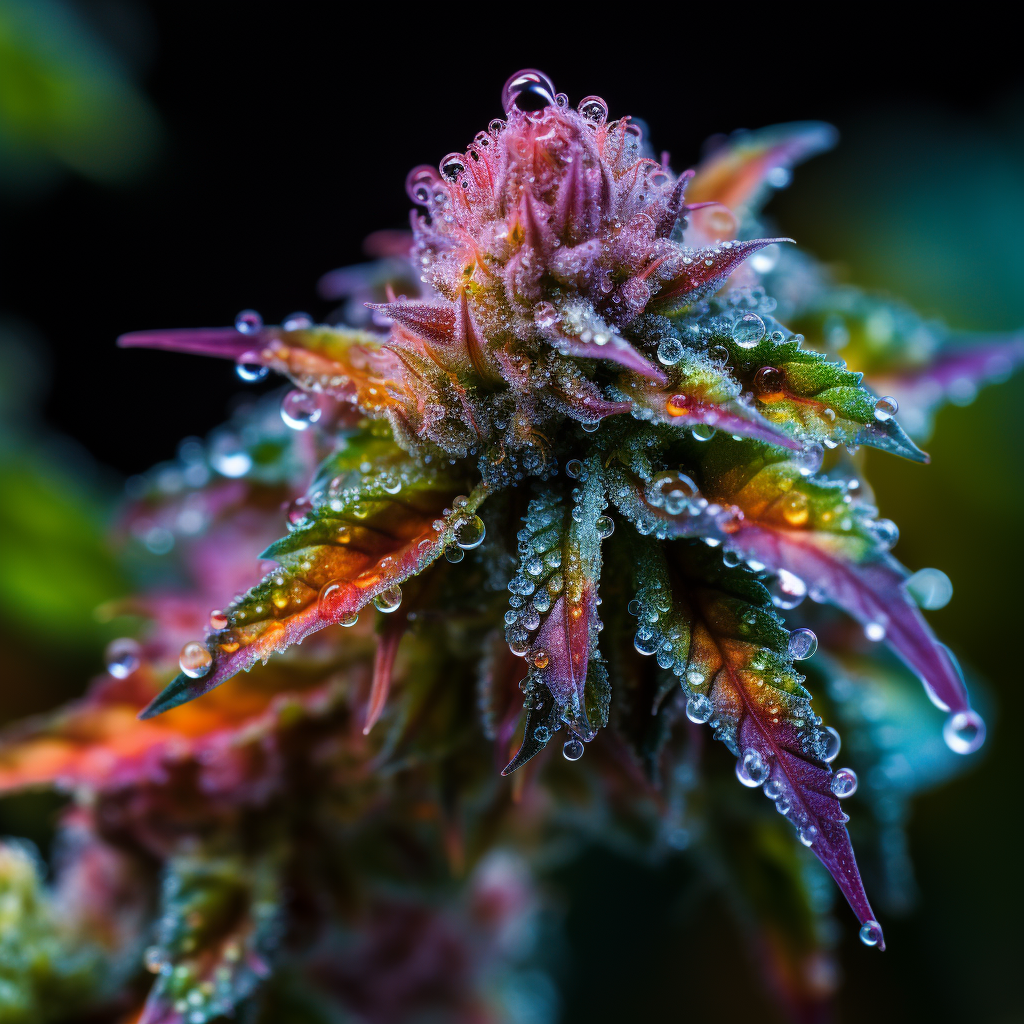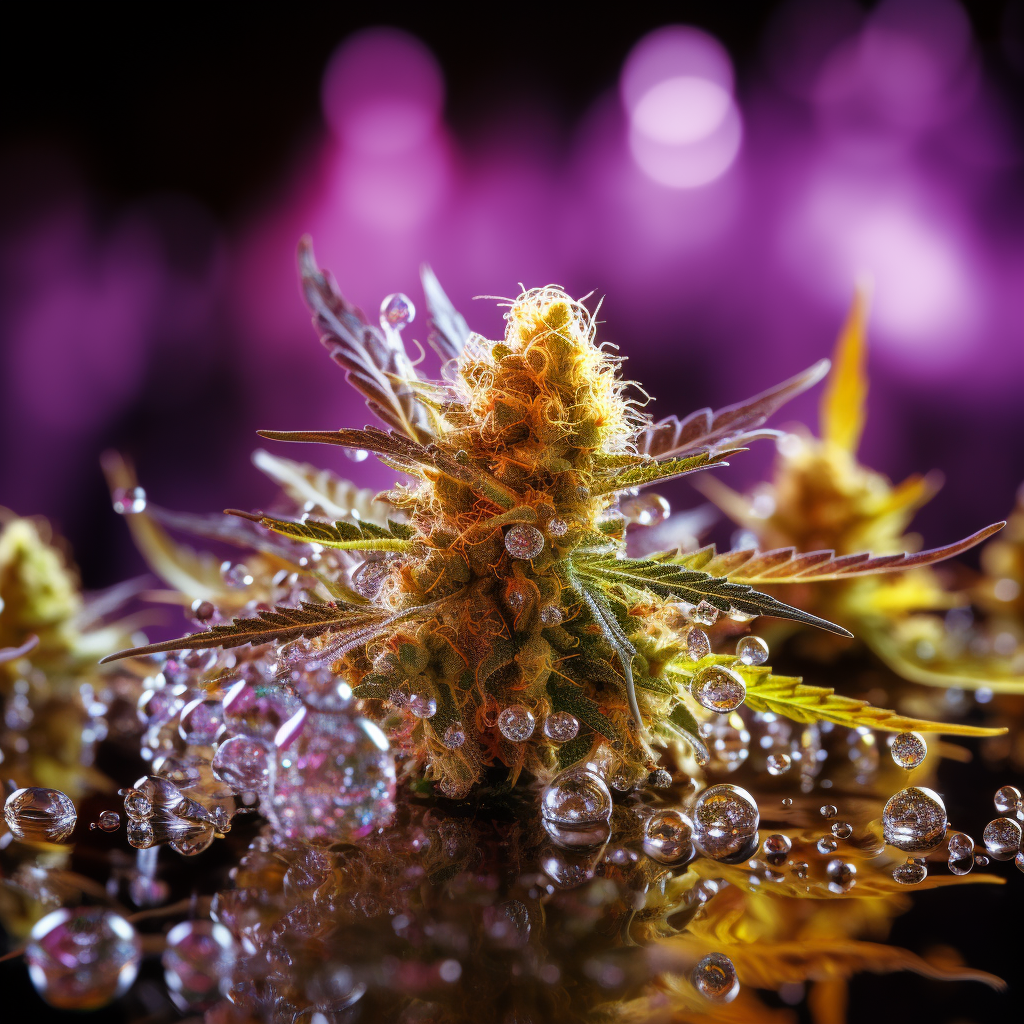In the lush, verdant world of medical cannabis, much attention is lavished upon the prominent actors THC and CBD, celebrated for their therapeutic prowess. Yet, a deeper dive into the botanical complexity of cannabis reveals a symphony of unsung heroes that play a critical role in its medicinal effects: terpenes. These aromatic compounds, responsible for the distinct fragrances of cannabis strains, are emerging as pivotal players in the plant’s therapeutic potential, orchestrating an intricate dance of healing properties that extend far beyond mere scent.


Table of Contents
ToggleThe Essence of Terpenes
Terpenes are volatile aromatic molecules found abundantly in nature, giving lavender its calming scent, pine its fresh aroma, and citrus fruits their zesty punch. In cannabis, terpenes are synthesized in the trichomes—the same glands where THC and CBD are produced—lending each strain its unique bouquet. But terpenes do much more than provide olfactory pleasure; they are potent chemical compounds that interact with the human body in profound ways.
A Symphony of Synergy: Terpenes and the Entourage Effect
The concept of the “entourage effect” posits that the medicinal impact of the whole cannabis plant is greater than the sum of its parts. Terpenes are key players in this effect, enhancing the therapeutic qualities of cannabinoids through synergy. This interaction can amplify specific benefits, mitigate side effects, and influence the overall efficacy of medical cannabis treatments. For instance, the terpene myrcene is believed to enhance THC‘s sedative effects, while limonene might boost mood and alleviate stress.
Terpenes at the Forefront of Medical Research
Myrcene
Found in mangoes, lemongrass, and hops, myrcene is the most abundant terpene in many cannabis strains. It is revered for its sedative, anti-inflammatory, and analgesic properties, potentially aiding in conditions like insomnia, pain, and inflammation.
Limonene
This citrus-scented terpene, prevalent in lemon and orange peels, is known for its mood-enhancing, anti-anxiety, and antidepressant qualities. Limonene may also have antifungal and antibacterial properties, suggesting a role in skin health and respiratory infections.
Pinene
Evoking the fresh scent of pine, pinene is noted for its anti-inflammatory, bronchodilator, and neuroprotective effects. It could be particularly beneficial for patients with asthma, pain, and neurodegenerative diseases.
Linalool
Best known for giving lavender its signature fragrance, linalool has potent anti-anxiety, sedative, and anti-convulsant properties. It’s a promising compound for treating anxiety, depression, and seizure disorders.
Caryophyllene
With a spicy, peppery aroma, caryophyllene stands out as the only terpene known to act as a cannabinoid, binding directly to CB2 receptors. Its anti-inflammatory, analgesic, and anti-cancer properties are of significant interest, particularly for treating pain and inflammation.


Beyond Scent: Terpenes and Holistic Healing
The study of terpenes in medical cannabis opens up new vistas for holistic healing, suggesting that the future of cannabis medicine lies not only in the extraction and isolation of compounds but in harnessing the full spectrum of the plant’s chemistry. This holistic approach could lead to more personalized and effective treatments, with specific terpene profiles tailored to individual patient needs and conditions.
The Future of Terpenes in Medical Cannabis
As the legal landscape surrounding cannabis continues to evolve, so too does the scientific exploration of its components. The potential of terpenes is just beginning to be understood, with research pointing towards a future where these aromatic compounds play a central role in medical cannabis therapies. By deepening our understanding of terpenes and their interactions with cannabinoids, we pave the way for more nuanced, effective, and natural treatments for a wide array of conditions.
In the garden of medical cannabis, terpenes are the aromatic architects of healing, offering a kaleidoscope of therapeutic possibilities. Their role underscores the importance of approaching cannabis as a complex botanical medicine, where every compound, no matter how small, contributes to the plant’s healing power. As we continue to explore the depths of cannabis chemistry, terpenes stand as a testament to nature’s sophistication and its untapped potential for healing.


FAQ: The Role of Terpenes in Medical Cannabis
What are terpenes?
Terpenes are aromatic compounds found in many plants, including cannabis. They are responsible for the distinct scents and flavors of various strains, from the citrusy aroma of limonene to the earthy fragrance of myrcene. Beyond their sensory attributes, terpenes also possess a wide range of therapeutic properties.
How do terpenes work in the body?
Terpenes interact with the body’s endocannabinoid system and other biological pathways, influencing various physiological and psychological processes. This interaction can affect mood, stress levels, pain perception, and inflammation, among other effects. Some terpenes bind to receptors in the brain, similar to cannabinoids, while others can affect cell membranes or enzymes.
What is the entourage effect?
The entourage effect refers to the synergistic interaction between cannabinoids (like THC and CBD) and terpenes in cannabis. This interaction is believed to enhance the therapeutic effects of the plant’s compounds, making the overall effect of the cannabis more significant than the sum of its individual parts.
Can terpenes affect the potency of cannabis?
While terpenes themselves do not directly affect the potency of cannabis in terms of THC content, they can influence the overall therapeutic experience. Certain terpenes may enhance the effects of THC and CBD or mitigate some of the less desirable effects, such as anxiety or paranoia associated with THC.
What are some common terpenes and their effects?
- Myrcene: Sedative, anti-inflammatory, analgesic. Common in indicas, contributing to their relaxing effects.
- Limonene: Mood-enhancing, anti-anxiety, antidepressant. Gives citrusy strains their uplifting qualities.
- Pinene: Anti-inflammatory, bronchodilator, neuroprotective. Found in pine-scented strains, it may aid in alertness and memory retention.
- Linalool: Anti-anxiety, sedative, anti-convulsant. Present in lavender-scented strains, it’s known for stress relief and relaxation.
- Caryophyllene: Anti-inflammatory, analgesic, binds to CB2 receptors. Its spicy scent is associated with pain relief and anti-inflammatory benefits.
How are terpenes used in medical cannabis treatments?
Terpenes are considered when selecting cannabis strains for specific therapeutic goals. For example, a strain high in linalool and myrcene might be chosen for its calming and sleep-inducing effects, while a limonene-rich strain could be preferred for mood elevation and anxiety relief. Understanding terpene profiles helps in tailoring treatments to individual patient needs.
Can you isolate terpenes for medical use?
Yes, terpenes can be isolated and used in various forms, such as oils, tinctures, and topical applications. Isolated terpenes can be combined with cannabinoids in precise ratios to create targeted treatments that leverage the entourage effect for specific medical conditions.
Are terpenes safe?
Terpenes are generally considered safe, especially when consumed in the concentrations naturally found in cannabis. However, like any compound, they can cause adverse reactions in sensitive individuals, especially at higher concentrations. It’s important to start with low doses and consult with a healthcare provider, particularly if using isolated terpenes or high-terpene extracts.
Do terpenes interact with medications?
While research on terpene-drug interactions is still in its early stages, the potential for interactions exists, as terpenes can affect the same biological pathways and enzymes as certain medications. Patients should always consult with a healthcare professional before combining cannabis or terpene therapies with other medications.
Understanding the role of terpenes in medical cannabis offers a more nuanced approach to treatment, highlighting the importance of considering the full spectrum of the plant’s compounds in therapeutic use. As research continues to unveil the myriad benefits of terpenes, their incorporation into personalized medicine becomes increasingly significant, promising more targeted and effective treatments for a wide range of conditions.
Kannabu's Online Cannabis Educational Resources
Read Educational Online Guides and Articles to Learn About Cannabis
- Navigating the Green Path: CBD vs. THC in Medical Treatment
- The Aromatic Architects of Healing: The Role of Terpenes in Medical Cannabis
- Navigating the Green Frontier: Clinical Trials on Cannabis and Its Effects
- Charting the Green Path: Cannabis Dosing Guidelines for Medical Use
- The Endocannabinoid System: Nature’s Balancing Act in Human Health
- A Green Horizon: Cannabis as an Alternative to Opioids
- Navigating the Mind’s Garden: Cannabis and Mental Health Treatment
- Unlocking the Green Code: Exploring the Genetic Diversity and Pharmacological Promise of Cannabis
- Weaving Green into Gold: The Integration of Medical Cannabis into Traditional Medicine
- The Therapeutic Promise of Medical Cannabis: Exploring the Spectrum of Cannabinoids
- From Young to Old: The Compassionate Embrace of Medical Cannabis in Pediatric and Geriatric Care
- Green vs. Traditional: Navigating the Crossroads of Medical Cannabis and Conventional Therapies
- Beyond the Pain: The Comparative Effectiveness of Cannabis in Chronic Pain Management
- Unlocking Cannabis’s Secrets: The Journey Through Cannabinoid Pharmacokinetics and Pharmacodynamics
- Green Paws: Navigating the Frontier of Medical Cannabis in Veterinary Care
- Unlocking Relief: The Transformative Role of Medical Cannabis in Pain Management

